Every NBA player has something to prove during the upcoming 2024-25 season.
It’s just that a select group of players will feel that pressure more than the rest.
From superstars needing to deliver on basketball’s biggest stage to bench-fillers running short on time to secure their rotation spots, we’re spotlighting the one player on each team with the most at stake.
Atlanta Hawks: Trae Young

Michael Hickey/Getty Images
Trae Young is a three-time All-Star and one-time leader of an Eastern Conference finals trek. On the surface, the hyper-productive point guard shouldn’t have much to prove.
And yet, his entire existence with Atlanta—the only NBA franchise he’s known—is seemingly up in the air. The Hawks already split from his backcourt mate, Dejounte Murray, this offseason and could potentially pivot toward a youth-focused rebuild around Jalen Johnson, Onyeka Okongwu, Dyson Daniels, Kobe Bufkin and this year’s No. 1 pick, Zaccharie Risacher.
Atlanta may have already taken that plunge if not for the fact the San Antonio Spurs have control of the Hawks’ next three first-round picks. That buys Young a little more time to convince this front office he should remain their centerpiece. He’ll also be eligible for an extension after this season, so he needs to prove he’s worthy of another major-money commitment.
Boston Celtics: Jaden Springer

Nathaniel S. Butler/NBAE via Getty Images
The Celtics’ sprint to last season’s title took a lot of potential candidates off this list. Gone are the questions of whether Jayson Tatum and Jaylen Brown could steer a championship run. Even support players like Sam Hauser and Payton Pritchard proved their worth as rotation-regulars for Boston’s banner-raising bunch.
The options, then, are limited. And while there’s the low-hanging fruit of Kristaps Porziņģis proving he can stay on the floor, that feels like it misses the spirit of this exercise. Plus, he’s already looking at a potential multi-month absence following offseason leg surgery.
So, let’s shift the spotlight much farther down the pecking order and shine it on Jaden Springer, a 21-year-old who’s already racing against the clock. He has three NBA seasons under his belt, but only 602 NBA minutes on his career tally. His defense and hustle are both NBA-quality, but he needs to show he can contribute enough on the offensive end to not get schemed off the floor.
Brooklyn Nets: Cam Thomas
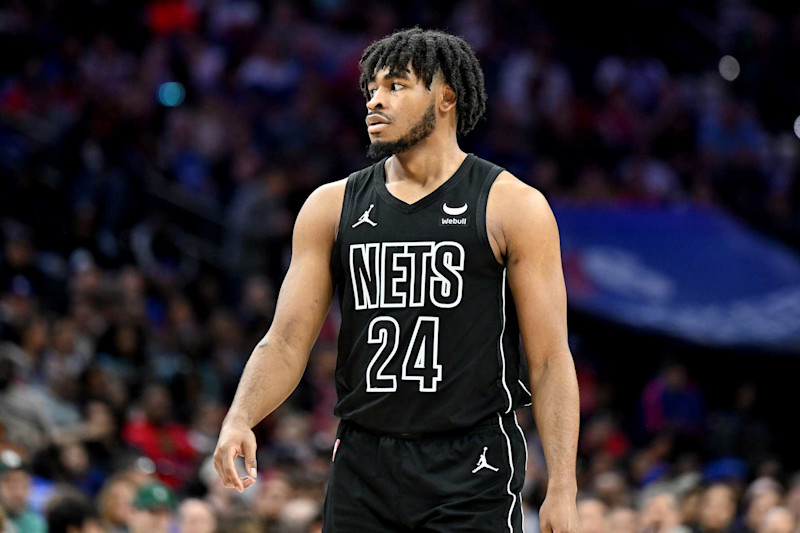
G Fiume/Getty Images
Cam Thomas is, in cool-kid basketball parlance, a bucket. After pouring in points as a quick-strike substitute over his first two seasons, he saw a major role expansion this past season—51 starts, 31.4 minutes per game—and still delivered a personal-best 25.7 points per 36 minutes.
His point-production should climb even higher following Brooklyn’s summer subtraction of Mikal Bridges, but can Thomas function as more than a one-dimensional contributor? Buckets are great and all, but if they’re attached to bouts of tunnel vision on offense and, let’s stay, less than enthusiastic defense, they lose a lot of their sizzle.
Thomas is eligible for an extension, but that feels unlikely given the questions surrounding his supplemental skills and the state of this franchise. In other words, there could be tens of millions of dollars on the line this season, and it will take more than a spike in scoring to secure the bag.
Charlotte Hornets: LaMelo Ball
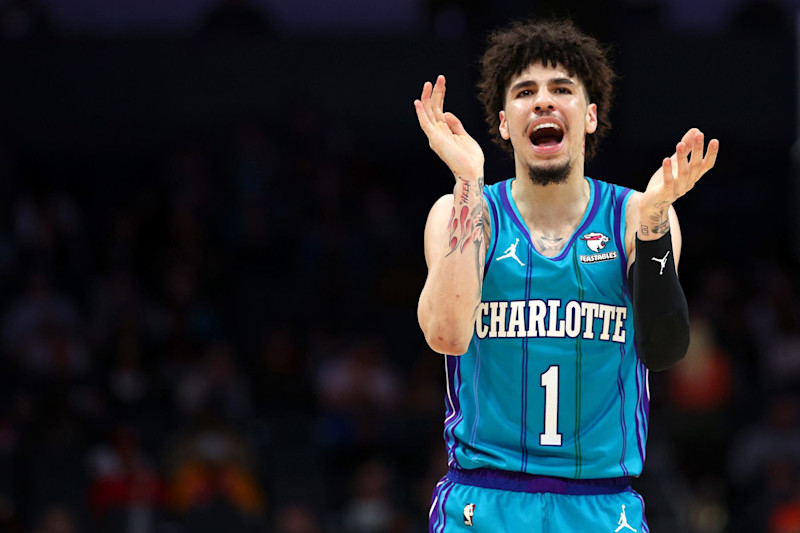
Jared C. Tilton/Getty Images
There are arguments to be made about the Hornets’ potential to be at least in the play-in tournament running this season. However, they all hinge on LaMelo Ball’s ability to stay healthy and prove his highlight-friendly, stat sheet-stuffing style can be conducive to winning basketball.
He is a former All-Star and social media juggernaut, but he’s also someone who, in the words of ESPN’s Tim MacMahon (via Swarm & Sting), someone who plays an “empty calories game.” Ball’s deep threes and highlight dimes are fun to see, but he’s never been as efficient as you’d want an offensive focal point to be (career 42.7 field-goal percentage). And it’s not like his effort and execution on the defensive end is exactly tone-setting stuff.
Charlotte has done a decent job of finding young talent lately (Brandon Miller waves hello), but are the Hornets fully convinced Ball is the right player to oversee this nucleus? If the inefficiency and sometimes disastrous defense weren’t worrying enough, he’s also been limited to just 58 appearances over the past two seasons combined.
Chicago Bulls: Patrick Williams

Jeff Haynes/NBAE via Getty Images
Chicago’s roster is chock-full of prove-it players. Zach LaVine and Nikola Vučević have tickets out of town as soon as they convince a contender to come get them. Coby White has a breakout campaign to repeat (or improve upon). Josh Giddey has a chance to show what he can do as a primary playmaker. Even Jevon Carter needs to re-establish himself as a reliable role player.
And yet, Patrick Williams feels like the obvious choice. While he didn’t force the Bulls to pick him fourth overall in 2020 or to double-down on that commitment with a $90 million contract this summer, those decisions still put him under the spotlight. The fact he hasn’t appeared worthy of either investment only ups the scrutiny.
Those old Kawhi Leonard comparisons almost feel comical at this point given how little Williams has done to live up to them. He entered the Association as a reasonably capable three-and-D wing and has yet to grow beyond that label across four seasons (two of which were wrecked by injuries, by the way). Chicago keeps handling him as some rising star, so it’d be nice to see him get off the launching pad finally.
Cleveland Cavaliers: Evan Mobley

Nick Cammett/Getty Images
If Evan Mobley shared the frontcourt with a knockdown shooter, that wouldn’t be such pressure to develop his perimeter game. If the Cavaliers hadn’t accelerated their rebuild with the 2022 trade for Donovan Mitchell, there wouldn’t be such urgency for Mobley to realize his potential.
Yet, Mobley still suits up alongside Jarrett Allen (for now, at least), so there is a need for Mobley to harness an outside shot. And since Mitchell’s arrival pushed Cleveland into the Eastern Conference’s top tier, there is a rush for Mobley to blossom as a second star. It’s hard to see the Cavs even entertaining championship dreams without that happening.
Mobley is an exceptional defender who can clean the glass and finish around the basket. He is not yet the top-shelf, two-way talent Cleveland needs him to be for this club to plot a path out of the conference. While the Cavaliers surely hope new coach Kenny Atkinson can squeeze more out of their entire core four, the focus is really on Mobley and whether or not he can become their difference-maker.
Dallas Mavericks: Klay Thompson
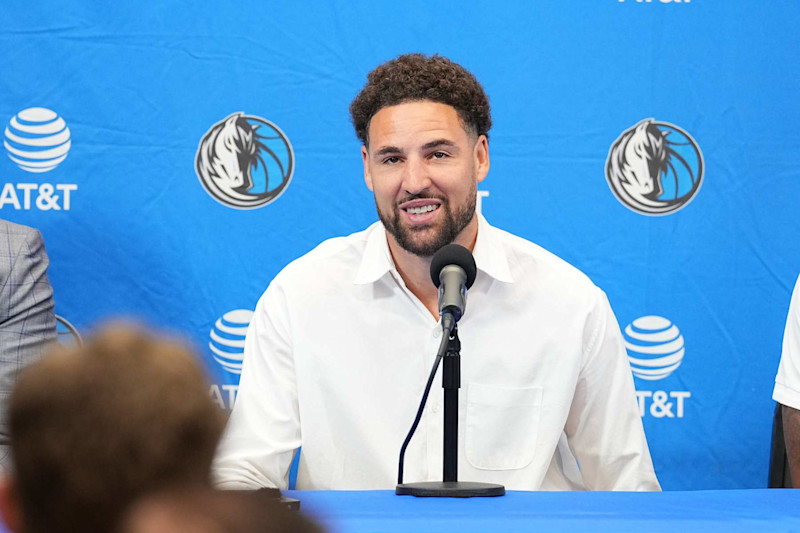
Photos by Glenn James/NBAE via Getty Images
The Mavericks fell three wins shy of capturing last season’s ultimate prize. Can Klay Thompson help them cover that gap this time around?
That’s a ton to ask of a 34-year-old (let alone one with his injury history), yet it kind of feels like the plan. All due respect to Naji Marshall, but Thompson stands as the team’s most significant offseason addition.
Did the Mavericks overcommit to a falling star? Or did they find the perfect complement to their prolific pick-and-roll game engineered by Luka Dončić and Kyrie Irving? The offense should be magical, but does Dallas have enough on defense to escape the Western Conference gauntlet? Thompson has plenty to prove on that front.
Denver Nuggets: Jamal Murray

David Sherman/NBAE via Getty Images
This wouldn’t be a universal selection. Many would take the easy option of picking one of the young wings (Christian Braun, Peyton Watson and Julian Strawther) given their need to elevate in light of Kentavious Caldwell-Pope’s exit. Others might put the focus on Michael Porter Jr., who is frankly paid too much to function as just a jumbo shooter.
Instead, the microscope falls on Jamal Murray, Denver’s new $208 million man. For all that he’s accomplished to this point—being the second option on a championship team and routinely working two-way magic with Nikola Jokić—Murray arguably faces as much pressure to perform as ever.
He wasn’t great in this past postseason and looked even worse in the Olympics. He’s also had increasing difficulty staying on the floor, having last cleared the 70-game mark in 2018-19. And while he’s in the discussion of the best players to not make an All-Star Game, he hasn’t quite been able to engineer that breakout season to earn the invite. The Nuggets, who appear as top-heavy as ever, need him at his absolute best if they’re going to regain their place on the NBA throne.
Detroit Pistons: Everyone

Chris Schwegler/NBAE via Getty Images
This feels like a cop-out answer, in large part because it is one. But, honestly, who doesn’t have something to prove in Detroit?
Cade Cunningham secured a max extension, but the Pistons are still awaiting his ascension into full-fledged stardom. Jaden Ivey, Jalen Duren and Isaiah Stewart have yet to achieve building-block status. Ausar Thompson might be a jumper away from being really interesting, but is there any hope for that shot? Is there any reason to believe Tobias Harris, Malik Beasley and Tim Hardaway Jr. are anything other than placeholders? Was Ron Holland a steal or a reach with the No. 5 pick?
You could work your way down the entire roster and find one player after the next with plenty on the line this season. Cunningham’s ascension is the most important plot point for the Pistons, but singling him out feels unfair when he has shown the most growth (in suboptimal developmental conditions, mind you). So, yeah, everyone feels like an appropriate response.
Golden State Warriors: Jonathan Kuminga

Rocky Widner/NBAE via Getty Images
Jonathan Kuminga has shown flashes of stardom across his first three NBA seasons. The key word in all of that, though, is flashes, as the No. 7 pick of the 2021 draft has only averaged 21.5 minutes across 211 career contests (74 starts).
His explosive athleticism jumps off the screen, and his hints of self-creation really let the imagination run wild. Yet, because he’s relatively unproven and still has warts in his game—he’s neither the rebounder nor defender his physical gifts say he should be—his theoretical upside is just that: a theory.
That wouldn’t normally be too worrisome for a 21-year-old, yet it matters here for a few reasons. First, Golden State hopes like heck he can tap into that potential right now, because Stephen Curry badly needs a costar. Second, Kuminga’s bank account needs him to come through, because the Warriors “aren’t currently prepared” to give max money to the extension-eligible swingman, per Anthony Slater of The Athletic.
Houston Rockets: Jalen Green
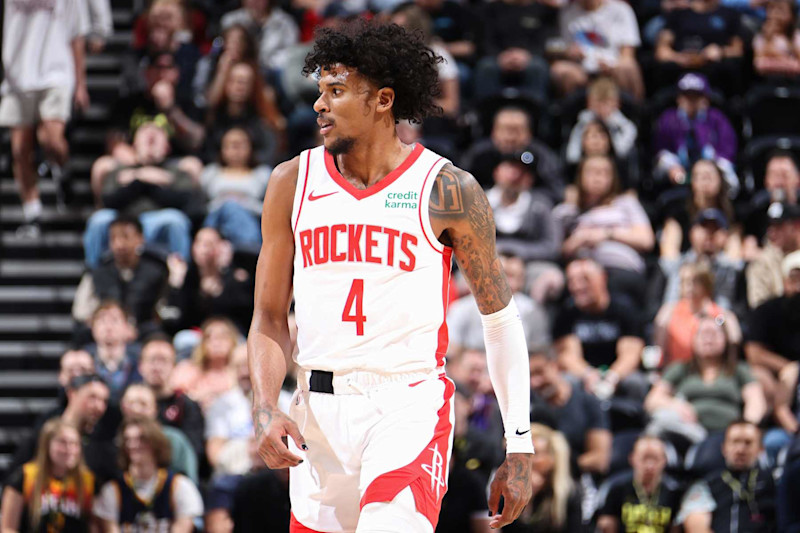
Melissa Majchrzak/NBAE via Getty Images
Jalen Green had a spectacular stretch during last season’s second half, averaging 30.2 points (on 50.4/45/74.2 shooting), 6.7 rebounds and 4.1 assists during Houston’s 11-game winning streak. He even earned Western Conference Player of the Week honors amid the heater.
It was the kind of play the Rockets had been hoping to see from the No. 2 pick of the 2021 draft. It was also anomalous based on what he’d done to that point, making it confusing to tell what to take from it. He is clearly capable of delivering some fiery runs, but on balance he has disappointed more often than not. For a scoring specialist, his career 42.1/33.7/79.4 slash line is wholly underwhelming.
That makes it tricky to envision Green and the Rockets agreeing to a contract extension ahead of this season, meaning his next contract—and perhaps his future with the franchise—could very well be on the line during the upcoming campaign.
Indiana Pacers: Bennedict Mathurin

Jeff Dean/NBAE via Getty Images
While the Pacers used the 2023-24 season as a springboard, second-year swingman Bennedict Mathurin failed to do the same. Despite showing a few skill improvements—upping his shooting rates and assists while trimming his turnovers—he lost his starting spot and wound up averaging fewer minutes (26.1) than he had as a rookie (28.5).
A right shoulder injury sidelined him for good in March, meaning he was simply a spectator during Indiana’s run to the Eastern Conference finals. The Pacers also seemingly found better fits in their starting lineup with Andrew Nembhard and Aaron Nesmith, as each supplies something (playmaking for the former, shotmaking and defense for the latter) that’s been more beneficial to the team than Mathurin’s scoring.
Mathurin, the No. 6 pick in 2022, is still just 22 years old, so he has time to find his footing. But will the Pacers, who accelerated their ascension with the Pascal Siakam pickup, be willing to wait? Mathurin felt like a franchise building block not long ago, but it’s possible Indiana now views him as being more valuable as a trade chip.
Los Angeles Clippers: James Harden

Glenn James/NBAE via Getty Images
The Clippers are cautioning folks not to write their obituary following Paul George’s defection in free agency. Skepticism seems warranted, though, since this top-heavy team had designs of George and Kawhi Leonard carrying it to contention.
Between George’s exit and Leonard’s ongoing availability issues, L.A.’s margin for error is somewhere between wafer-thin and non-existent. Whatever hints of hope it has left are tied to the possibility of a bounce-back season from James Harden.
The former MVP remains a potent playmaker and fiery outside shooter, but he’s a long ways removed from his days as a three-time scoring champ. Will a necessitated climb back up the pecking order get his point production back on track, or is the 35-year-old simply slipping into his decline? The answer will determine how much noise (if any) the George-less Clippers can make.
Los Angeles Lakers: Austin Reaves

Garrett Ellwood/NBAE via Getty Images
Austin Reaves had a fine 2023-24 season. The issue was the Lakers were kind of banking on a phenomenal one instead.
His stretch-run surge during the previous campaign had generated plenty of rising-star buzz, and while he made some statistical gains, this wasn’t eye-popping production (15.9 points and 5.5 assists in 32.1 minutes). He looked more like a rock-solid role player than a star-in-the-making, which, again, is fine in theory but potentially torpedoes any hopes of title dreams becoming reality.
The Lakers were pretty meh last season, needing the play-in tournament to secure their postseason spot and then getting knocked out of the first round in five games. And that was with Anthony Davis playing the most games of his career (76) and LeBron James playing his most games as in L.A. (71). With virtually the same roster in place, the Lakers could struggle to separate themselves from the West’s middle class, unless Reaves can engineer that leap year folks hoped to see last season.
Memphis Grizzlies: Ja Morant
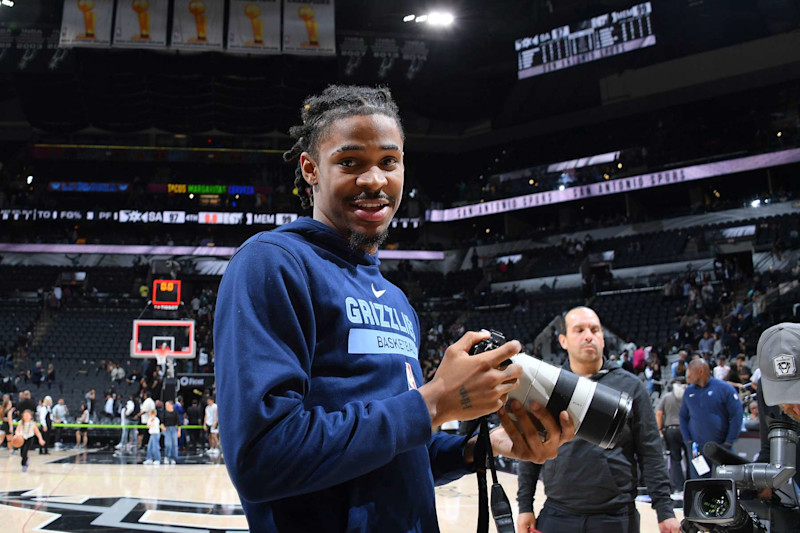
Photos by Michael Gonzales/NBAE via Getty Images
The Grizzlies could be a sleeping giant. Yet, that’s true if and only if Ja Morant can stay on the floor and play at an MVP level.
The second of those tasks might actually be the easiest for him. A healthy Morant is the proverbial unstoppable object. Over the past three seasons, he’s been a per-game supplier of 26.7 points, 7.5 assists and 5.8 rebounds. Those are, at the very least, down-ballot MVP numbers.
His issue, of course, has been availability. A combination of injuries and suspensions have severely limited his floor time of late. Last season, he made all of nine appearances. Memphis’ roster might be deep and talented, but no team is surviving the loss of a player of Morant’s caliber. If he isn’t consistently available to lead the Grizzlies, they aren’t going anywhere. If he is, though, they just might mess around and win the conference.
Miami Heat: Tyler Herro
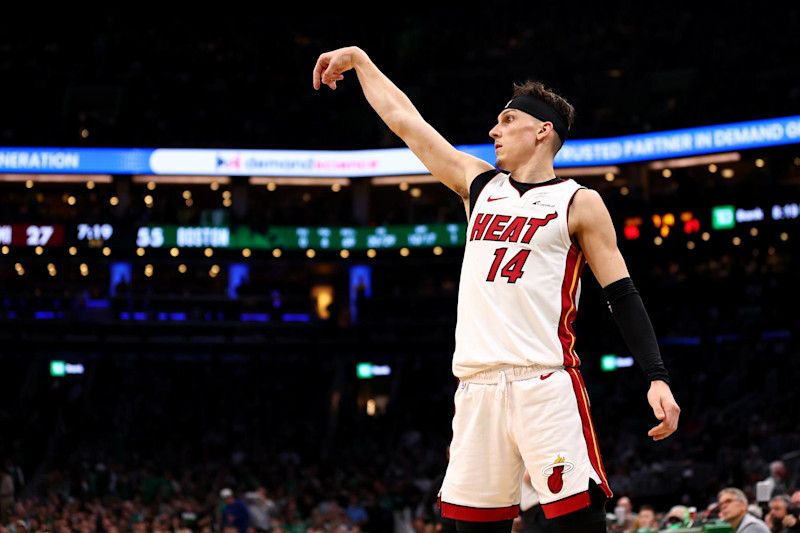
Maddie Meyer/Getty Images
The Heat once held sky-high hopes for Tyler Herro. They wouldn’t include him in trades for established stars. They threw $130 million his way before even seeing how he’d handle a starting role.
It’s fair to wonder, though, if Miami still thinks as highly of Herro. While he has averaged at least 20 points, five rebounds and four assists in each of the past three seasons, he hasn’t taken off as a playmaker or rocketed up his shooting rates. There’s some nitpicking when criticizing his offensive production, but that’s also kind of a must when he’s a liability on the defensive end.
Despite reaching at least the Eastern Conference finals in three of the past five seasons, the Heat are seldom mentioned among the conference’s elites. That’s because most of their playoff success has come on the heels of rather underwhelming regular seasons. If they’re going to rejoin the championship race, they need Herro to become the player they hoped he could be.
Milwaukee Bucks: Khris Middleton

Nathaniel S. Butler/NBAE via Getty Images
The Bucks are three seasons removed from winning a title and one season removed from the all-in addition of Damian Lillard made in pursuit of another. With franchise centerpiece Giannis Antetokounmpo firmly in his prime, Milwaukee should probably be mentioned among the upcoming campaign’s top contenders.
Yet, back-to-back first-round exits make it fair to question whether the Bucks remain card-carrying elites. And while Antetokounmpo’s postseason absences have contributed to those failures, the bigger worry in Wisconsin is with Khris Middleton’s struggles staying upright.
Skill-wise, he seems perfectly equipped to round out this Big Three, but that only matters if he’s actually suiting up. The 33-year-old has only suited up 88 times over the past two campaigns combined, and he had surgery on both ankles this offseason. Milwaukee’s aging, top-heavy roster is running out of time to make another title run, and that type of outcome is only possible if Middleton is available and playing at or near an All-Star level.
Minnesota Timberwolves: Jaden McDaniels

Cooper Neill/Getty Images
Jaden McDaniels looks like one of the league’s premier three-and-D wings. And when his three-balls are falling, that’s exactly who he is. However, defense is his only constant. Offense remains a mixed bag for the 6’9″ swingman, who has shot below 34 percent from three in two of the past three seasons. If he could harness his outside shot and summon a pinch more scoring, Minnesota might have what it needs to escape the Wild West.
“He’s the X-Factor of the team, I think everybody knows it,” Anthony Edwards told reporters in May. “When he plays well, we win. I don’t know the percentages, but I feel like when Jaden plays well, can’t nobody beat us.”
The Timberwolves are elite on defense, but their offense can’t be hit-or-miss beyond Edwards and Karl-Anthony Towns. In a perfect world, McDaniels would emerge as a steady third option. As Edwards eluded to, Minnesota might be unstoppable if that happens. Including the playoffs, McDaniels scored 14-plus points 22 times last season. The Wolves won 16 of those tilts.
New Orleans Pelicans: Brandon Ingram

Layne Murdoch Jr./NBAE via Getty Images
Despite plenty of trade chatter, it appears the Pelicans will be moving forward with extension-eligible swingman Brandon Ingram. If he had more of a trade market, though, that probably wouldn’t be the case. The former All-Star and Most Improved Player award winner is a good player, but he’s not a great one. Tack on his inability to shake the injury bug—he last played 65-plus games as a rookie—and he’s a tricky player to price.
That’s surely why New Orleans has thought twice about committing major coin to him. It’s also why it’s been mostly crickets on his trade market. There might be a contract amount at which it makes sense for Ingram and the Pelicans to stay together long-term, but it definitely doesn’t sound like they’ve found it.
“There is a financial reality to this,” Pelicans executive vice president of basketball operations David Griffin said. “And where I think we can go in terms of keeping this group together, might not be as far as he and his agency would like us to be able to go. So for now, we’re going to play it out.”
Ingram views himself as a max player. The Pelicans do not. The burden falls on Ingram to challenge that perception and convince someone—be that New Orleans or anyone else—he is that type of star.
New York Knicks: Julius Randle

Nathaniel S. Butler/NBAE via Getty Images
The Knicks had some awesome moments late last season and finished just a win shy of cracking the conference finals. Julius Randle wasn’t around for much of that success, having dislocated his right shoulder in late January and eventually opting for season-ending surgery in April.
New York wasn’t necessarily better without him—the Knicks had a better winning percentage with him (.630) than without (.583)—but the optics often seemed superior. The offense appeared to have a better flow, and the defense was more versatile. Having said that, the lack of a second creator next to Jalen Brunson eventually proved to be a fatal flaw in the playoffs.
Maybe Randle masterfully fills that void and gives New York a real shot at snapping a five-decade-long championship drought. Or perhaps he bogs down the offense and limits the defense. He’s about as polarizing as a three-time All-Star can be, plus he might be less than a year away from hitting the open market (player option for 2025-26). Few players around the league will face more pressure to perform this season.
Oklahoma City Thunder: Chet Holmgren
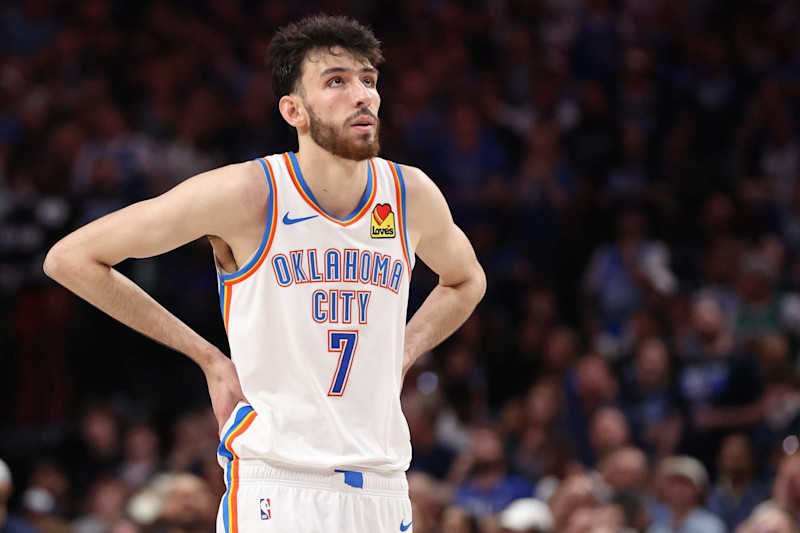
Tim Heitman/Getty Images
By any measure, Chet Holmgren’s rookie run was a smashing success. It was also perhaps not quite what Oklahoma City needs if it’s going to make a championship push.
Holmgren was a helpful paint protector and support scorer. Having said that, he did get pushed around on the glass, didn’t show much shot-creation and really tailed off as a three-point shooter. He went from hitting 39.3 percent of his long-range looks before the All-Star break to converting just 32.5 percent after, and his connection rate fell further to 26 percent in the playoffs.
The offseason addition of Isaiah Hartenstein lessens some concerns with Holmgren’s rebounding, but there are still questions about whether Shai Gilgeous-Alexander has enough scoring support. The best version of Holmgren could answer a lot of them, but Oklahoma City needs him to summon that form right now.
Orlando Magic: Jalen Suggs

Lauren Leigh Bacho/NBAE via Getty Images
The 2023-24 season will go down as a full-fledged leap year for Jalen Suggs. Now, the Magic just need him to make it back-to-back breakout seasons.
Credit the young guard from transforming himself from a liability to an asset on offense. His defense and hustle always turned heads, but he could only handle so many minutes when so many of his shots missed their mark. After shattering his previous personal-best percentages from the field (47.1) and from three (39.7), he no longer spoiled their spacing or gummed up their attack.
Can he add more volume, though? And, if this isn’t too greedy, maybe make a big step forward as a distributor, too? That’s asking a lot, obviously, but if the Magic are going to make the jump from pesky first-round opponent to legitimate contenders, they’ll need some extensive internal improvements. Suggs might be their best hope for delivering them.
Philadelphia 76ers: Joel Embiid
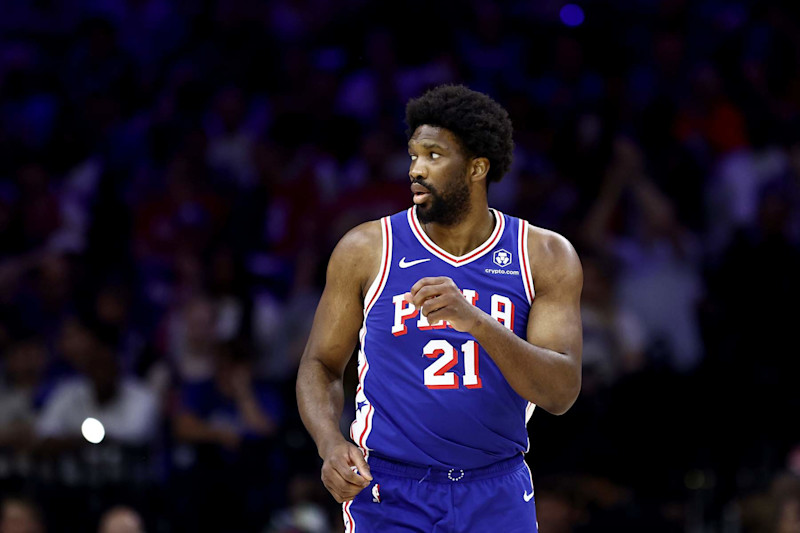
Tim Nwachukwu/Getty Images
How can a recent MVP and All-NBA regular possibly have anything to prove? Well, look at Joel Embiid’s playoff resume, and you’ll find the answer.
He just hasn’t been the same caliber of player come postseason time. You can certainly dig a lot deeper than this, but just for a basic illustration he’s gone from averaging 27.9 points on 61.5 percent true shooting in the regular season to 24.9 on 58 in the playoffs. And while this part isn’t entirely his fault, it’s still worth noting he has yet to travel beyond the conference semis.
Between the ascension of Tyrese Maxey and the addition of Paul George, Embiid’s supporting cast looks stronger than ever. That is objectively (and obviously) a good thing, but it does up the urgency for him to finally turn his regular-season success into postseason brilliance. Add in that he’s a 30-year-old with a worrisome injury history, and he is clearly fighting against the clock.
Phoenix Suns: Tyus Jones
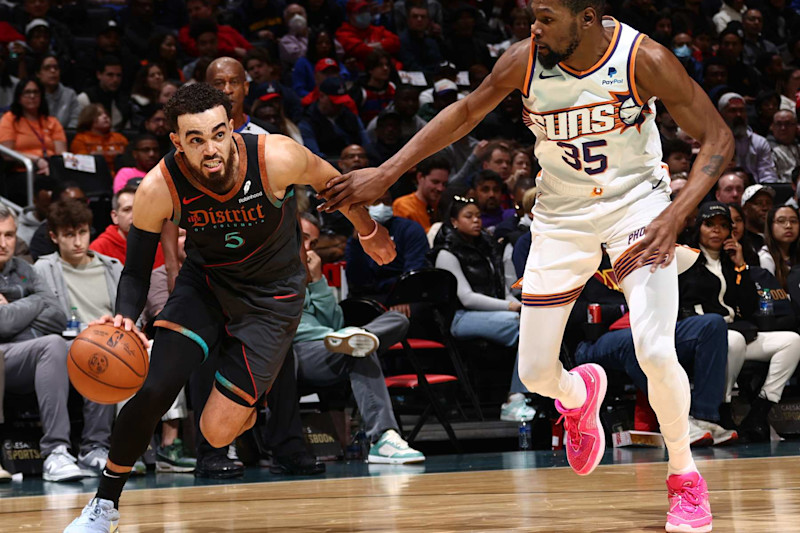
Kenny Giarla/NBAE via Getty Images
In a lot of ways, the book on Tyus Jones is already out. It’s generally promising, too. He is a masterful decision-maker who appears allergic to turnovers (7.3 assists against 1.0 turnovers last season). He has also made tremendous strides with his shooting efficiency, notching a 48.9/41.4/80 shooting slash his last time out.
Where the jury remains out, though, is whether he can serve as a competent starter. He was hugely helpful as a substitute and spot starter for the Memphis Grizzlies, but it’s tough to take anything from his lone season as a full-time starter when he spent it with the brutally bad Washington Wizards.
That’s perhaps why the cash-strapped Suns were able to lure him in for the veteran’s minimum. Granted, there weren’t a ton of point guard openings (or many teams with cap space) this offseason, but Jones waiting so long to sign for so little suggests his market never really materialized. If he can tie things together on this talented, top-heavy team in Phoenix, he could have much more lucrative offers available next summer, but it feels like front offices want to see how he handles being a starter on a championship-hopeful before forking over any cash.
Portland Trail Blazers: Scoot Henderson

Cameron Browne/NBAE via Getty Images
It wasn’t that long ago that Victor Wembanyama vs. Scoot Henderson was a thing. When Wembanyama showed some shaky shooting in summer league last year, some rival team officials “wondered whether San Antonio would regret passing on Henderson down the line,” per SI.com’s Chris Mannix.
That notion already feels laughable, and not only because Wembanyama laid waste to the basketball world as a rookie. It’s also due to the fact Henderson just didn’t look great in his first NBA go-round. Even if you’re grading him on a rookie curve, it’s fair to criticize his inefficiency (38.5 percent shooting overall, 32.5 from three) and decision-making (5.4 assists against 3.4 turnovers).
Now, one season does not a career make, so the 20-year-old Henderson still has plenty of time to turn things around. Still, if he can’t show more as a sophomore than he did as a rookie, the Trail Blazers might start to wonder whether he’s the right player to lead their post-Damian Lillard rebuild.
Sacramento Kings: Keegan Murray
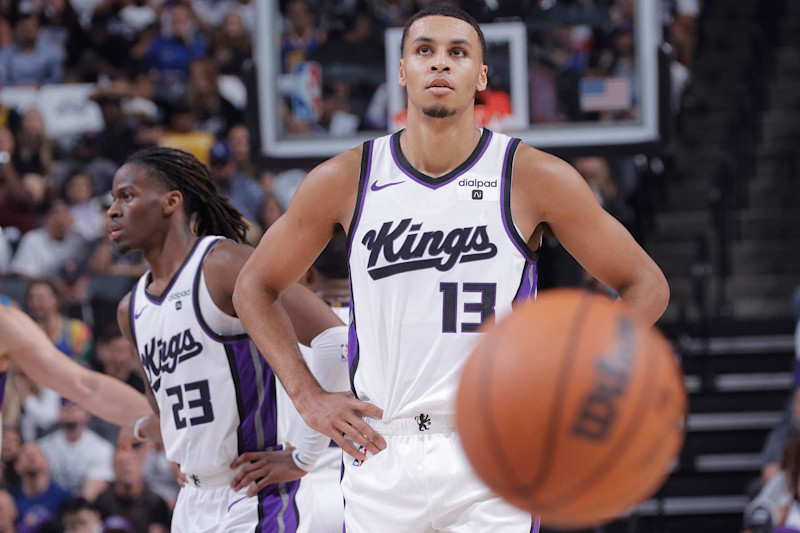
Rocky Widner/NBAE via Getty Images
While the Kings made a splashy addition this summer in the form of six-time All-Star DeMar DeRozan, his arrival hardly guarantees their ascension up the Western Conference ladder. As gifted as he is, he’s a bit of a peculiar fit with De’Aaron Fox and Domantas Sabonis, as there are concerns with spacing and defense for that trio.
DeRozan’s arrival might elevate Sacramento’s floor, but it’s tough to tell how much he can raise the ceiling. That job likely rests on the shoulders of third-year swingman Keegan Murray, who’s been a helpful three-and-D wing but has seldom shown flashes of true stardom.
Outside of Keon Ellis and rookie Devin Carter, the Kings don’t have many other avenues toward internal improvement. Murray stands as their best bet, provided you buy into the notion he possesses high-end potential.
San Antonio Spurs: Keldon Johnson

Photos by Michael Gonzales/NBAE via Getty Images
The Spurs correctly plotted their 2023-24 path around making life as easy as possible on top pick Victor Wembanyama. Part of that process involved decreasing Keldon Johnson’s floor time. Between October and December, he made 26 starts and averaged 32.5 minutes. From January through April, though, those figures fell to just one and 27.3, respectively.
Johnson is a relentless scorer, but consistency is not a strength. The Spurs could live with his lows in hopes he’d have more highs when there wasn’t much else brewing in the Alamo City, but they need more reliability now that they have a franchise focus. The ideal wing to slot alongside Wembanyama is a better shooter and defender than Johnson has been.
Still, a 24-year-old who has been as productive as this (18.1 points over the past three seasons) is usually a keeper for a future-focused team, so there’s a chance he could factor into the longterm plans yet. He’s had good defensive stretches and even a great shooting season (2.1 threes per outing, 39.8 percent shooting in 2021-22), so the talent is there, he just needs to improve his reliability.
Toronto Raptors: RJ Barrett

Issac Baldizon/NBAE via Getty Images
After committing to a youth movement this past season, the Raptors spent this summer cementing their nucleus. More specifically, they gave versatile forward Scottie Barnes a maximum extension and inked Immanuel Quickley to a five-year, $175 million deal.
RJ Barrett has a chance to prove his worth as one of Toronto’s cornerstones during the 2024-25 campaign. If he plays anything like he did after the December trade that sent him north of the border, that shouldn’t be a problem. In 32 games for the Raptors, he averaged 21.8 points, 6.4 rebounds and 4.1 assists while posting a 55.3/39.2/62.9 shooting slash.
The potential holdup here, though, is the sample size. Yes, the partial-season spent in Toronto was great, but his four-plus season run in New York was well short of that mark. He averaged 18.1 points, 5.4 rebounds and 2.8 assists on 42.2/34.3/70.9 shooting over his first four seasons and was even less productive at the time of the trade.
Utah Jazz: Keyonte George

Melissa Majchrzak/NBAE via Getty Images
Keyonte George performed well enough as a rookie to skyrocket the expectations around him. Jazz coach Will Hardy even told reporters, “Keyonte (has) the opportunity to become a real star in this league.”
George’s upside is admittedly tantalizing. His off-the-dribble creation for himself and his teammates opens the door to some really high-end outcomes. Then again, it’s tough to bill him as a budding offensive star when he managed just a 39.1/33.4/84.8 slash line and couldn’t double up his turnovers (2.5) with assists (4.4).
He is in such an early stage of his development that you don’t want to overreact to his highs or lows, but it’s also hard to overstate his importance to this franchise. While the Jazz paid a fortune to keep Lauri Markkanen around, the team’s trajectory says their youth matters most. George has flashed as much promise as any of Utah’s prospects, but he’s lacking the efficiency needed to realize his full potential.
Washington Wizards: Alex Sarr

Stephen Gosling/NBAE via Getty Images
It feels strange and a bit harsh to include a rookie in this exercise. Then again, it’s not like the rebuilding Wizards offered us many alternatives. Kyle Kuzma, Malcolm Brogdon and Jonas Valančiūnas are arguably all at the they-are-who-they-are stages of their careers, and while Jordan Poole is an option, selecting him would require more belief than his disastrous 2023-24 season allowed.
So, fair or not, Alex Sarr lands under the microscope. This year’s No. 2 pick showed tremendous defensive potential and interesting off-the-dribble abilities at summer league, but they were too often buried beneath his barrage of bricks (9-of-47 from the field). Washington may not have drafted him for his shooting, but it can’t afford for him to be a space-killer, either.
The good news is the Wizards might be years away from caring about winning, so they can live with his growing pains and might even appreciate them if they lead to 2025 draft lottery riches. The bad news is this league doesn’t have many openings for defense-first distributing bigs, so Sarr needs to find his sweet spots as a scorer to return positive value on the Wizards’ draft investment.
Leave a Reply